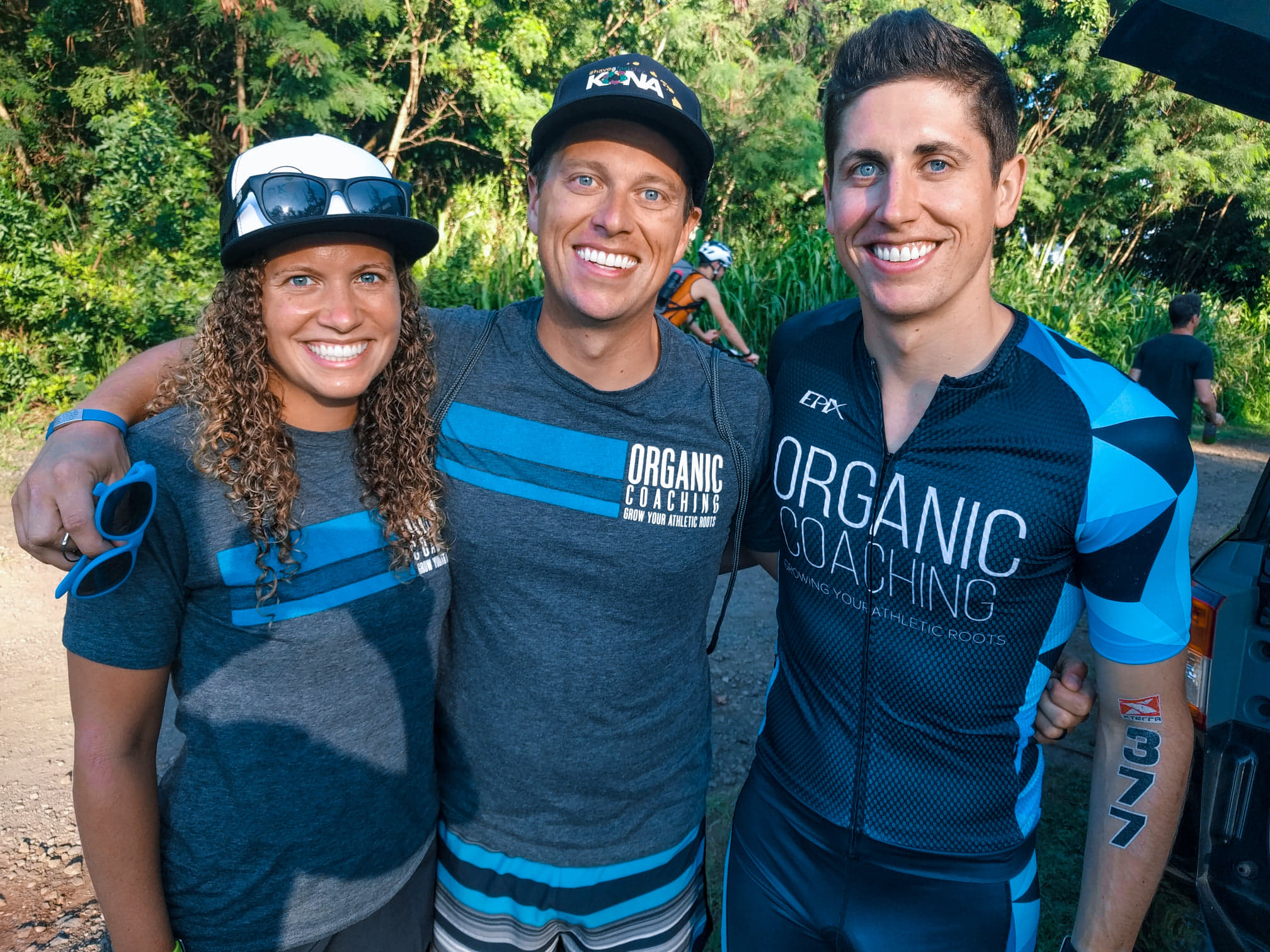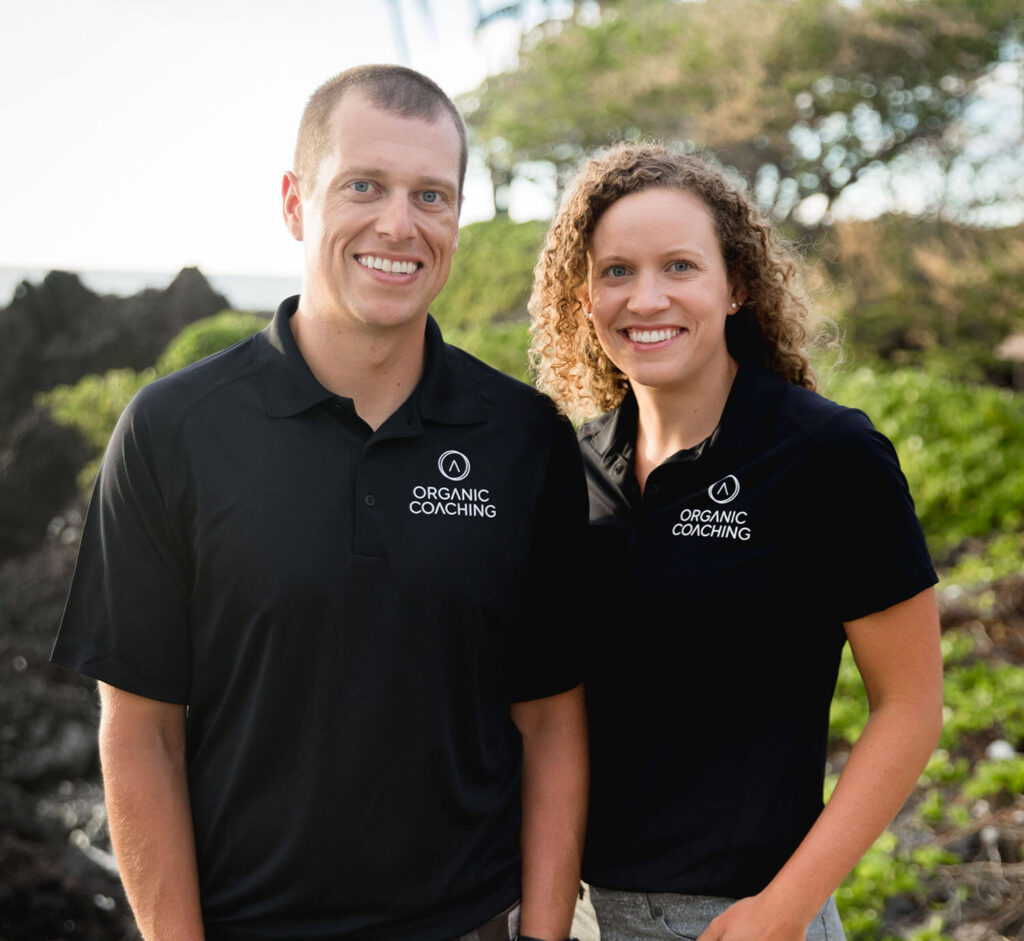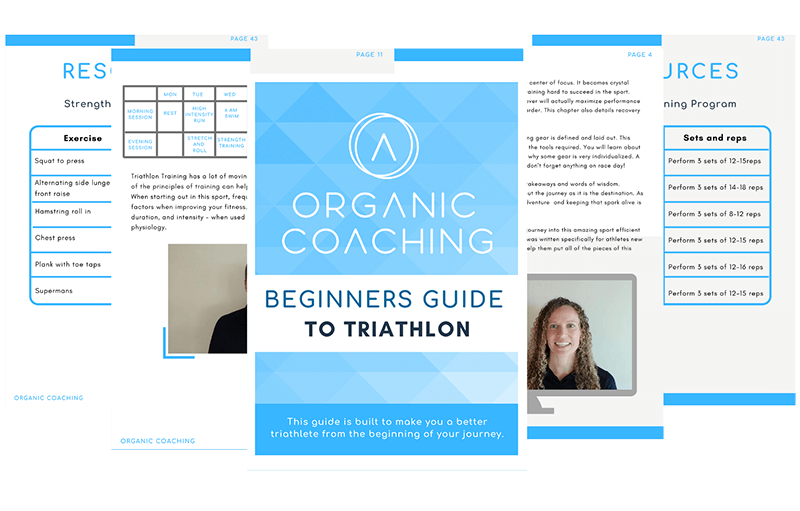

Does the thought of open water swimming excite you or slightly terrify you? Chances are at the beginning of your triathlon journey you felt hesitant. Open water swimming can be a daunting experience. It’s super common to be standing at the water’s edge waiting to get in to start the race with a million different thoughts rushing through your mind.
Rather than getting stuck in the worry spiral, we have a few open water swimming tips to help you have a faster and more efficient swim on race day.
Besides practicing in open water before race day and testing out proper gear options, here are four key open water swim tips to help you have a fast swim and be as efficient as possible.
Start by asking yourself if you’re a strong swimmer, or not. If you are a strong swimmer, position yourself front and center with a straight line to the first sighting buoy. If swimming is not your strong suit, then place yourself accordingly towards the back and off to the side. You don’t want to be right in the center of the masses.
Once the gun goes off, take your time getting in and swim towards clear water. There is no reason to rush to battle the chaos. Be okay with losing a few seconds, to prioritize your comfort. The more comfortable you feel during your open water swim the better your swim will go.
There are two ways you will start a triathlon: either wading in deeper water or on land with a running start.
If you start on land or in ankle-deep water, you will quickly discover you can only run so far in the water before it becomes counterproductive. Unfortunately, you may still be too shallow to start swimming. So what do you do?
Many triathletes will “dolphin” for several yards until it’s deep enough to begin swimming. “Dolphining” refers to a swimmer taking a shallow dive or leap forward, gliding for a few yards underwater, then standing and diving in again until it’s deep enough to begin swimming. This can be very efficient. You will typically find more competitive or experienced swimmers performing this technique.
However, there is nothing wrong with walking into deeper waters before swimming. Plus, if you are among a large group at the start, most likely, you will not have the room to dolphin dive. This too will be a result of how competitive you want to be and your swimming background.
Unlike in a pool, where the lane lines keep you swimming straight, it’s easy to veer off course in open water. Sighting and regularly looking up from your stroke is important for staying on course.
However, many people sight too often if you are coming out of the water with sore or hurting hip flexors that’s a result of lifting the head too much, which puts pressure on the hips.
On the flip side, not sighting enough can send you off course. Most swimmers don’t swim in a straight line. This will waste energy and leave you frustrated!
Pay special attention to your sighting during open-water swim practice, by looking for land markers to help you sight. It may be a tall tree, a water tower, or the top of a building, something that you can see each time you lift your head to look forward. Then focus on finding the right balance between looking up and down. That way, you will better learn to swim straight without constantly throwing off your body alignment.
It is critical that you learn to breathe bilaterally (breathing on both sides). If the swim course is an open rectangle where you swim out for a distance, then head left or right along the shoreline then back in again, you can use the shoreline as a means of marking your position. However, this may require that you breathe to a particular side that may be uncomfortable. To accommodate for this you need to practice breathing on both sides during your swim training.
Breathing on both sides will also keep your stroke in balance and allow you to swim straighter for more strokes. During your swim workouts, practice breathing every three to five strokes. This will force you to breathe on both sides. If you are initially uncomfortable, do this during your warm-up and cool down, and use fins or a pull buoy until you develop a feel for this.
Drafting during the swim portion of a triathlon is legal! By placing yourself within a pack of swimmers of similar experience and speed can be beneficial to your swim performance and overall racing performance. There are two ways one can draft off of another swimmer.
One is swimming directly behind the lead swimmer and the other is swimming in the wake of a lead swimmer. Both can be very effective in the open water. If you were to swim directly behind a swimmer and close to their feet the result would be a “pulling” effect. If you were to swim in the wake of another swimmer, ideally you would position yourself just off the shoulder of that swimmer. The benefit is, an added push provided by the swells or wakes created by that lead swimmer.
When you near the end of your swim and the water’s edge is in sight, avoid running through the rest of the water. If you put your feet down too soon, you could trip, twist an ankle, or hurt your foot on a rock. Wading through hip or waist-deep water also takes more time and energy than swimming. To avoid feeling exhausted by the time you get to the transition area, you shouldn’t stand until your hands hit the ground a few times. Just keep swimming!
Have a race coming up? Prepare with the Organic Coaching Pre Guide, grab the instant download here.


Carly and Tyler Guggemos built Organic Coaching in 2014 with a simple philosophy that works. The idea is to take what you have and grow it to get faster, fitter and stronger. And to do it with the time you have – not the time you wish you had.

For athletes who are ready to take their training to the next level while still thriving and succeeding in their professional and family life.
Copyright © 2024 Organic Coaching LLC